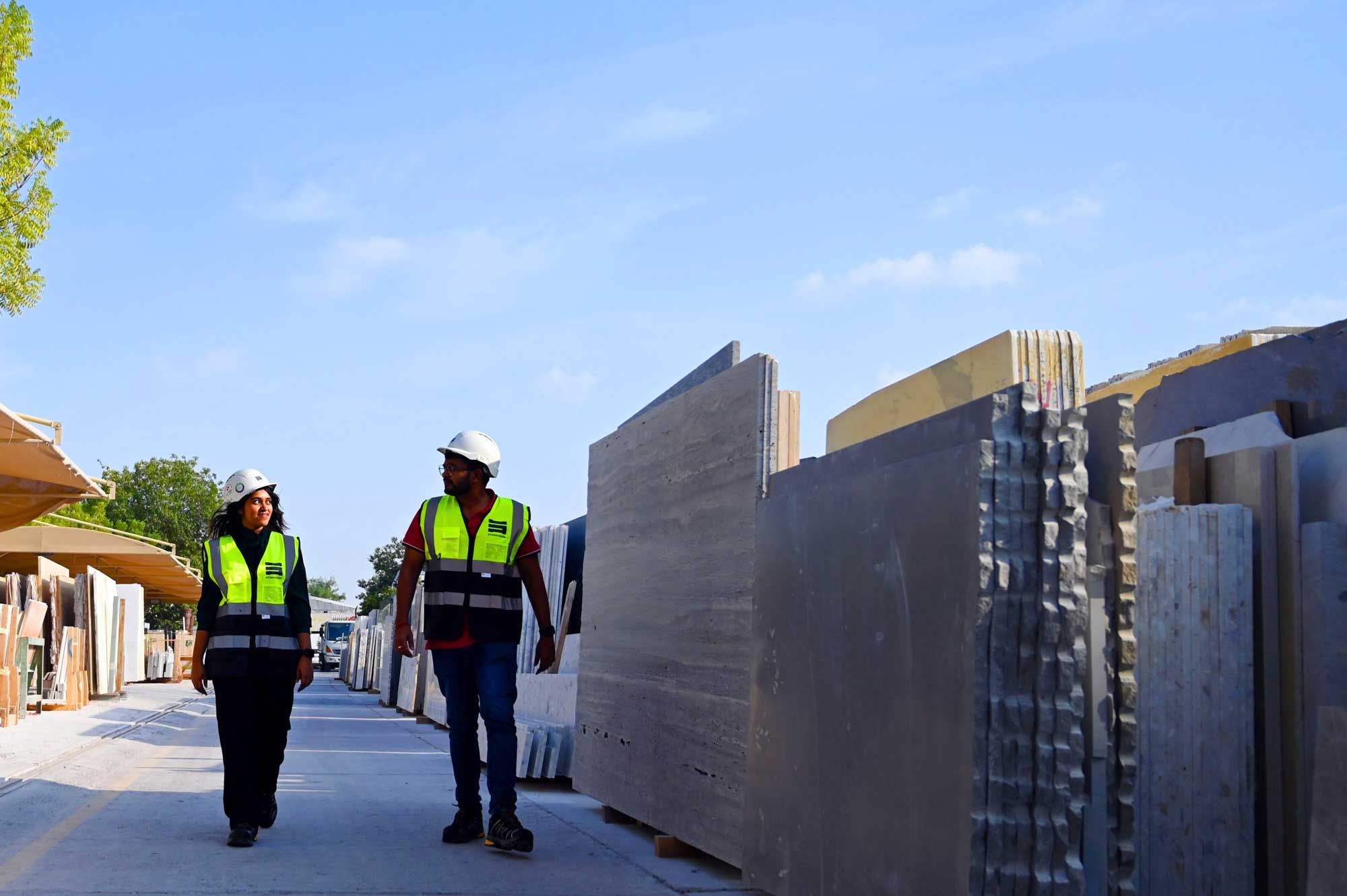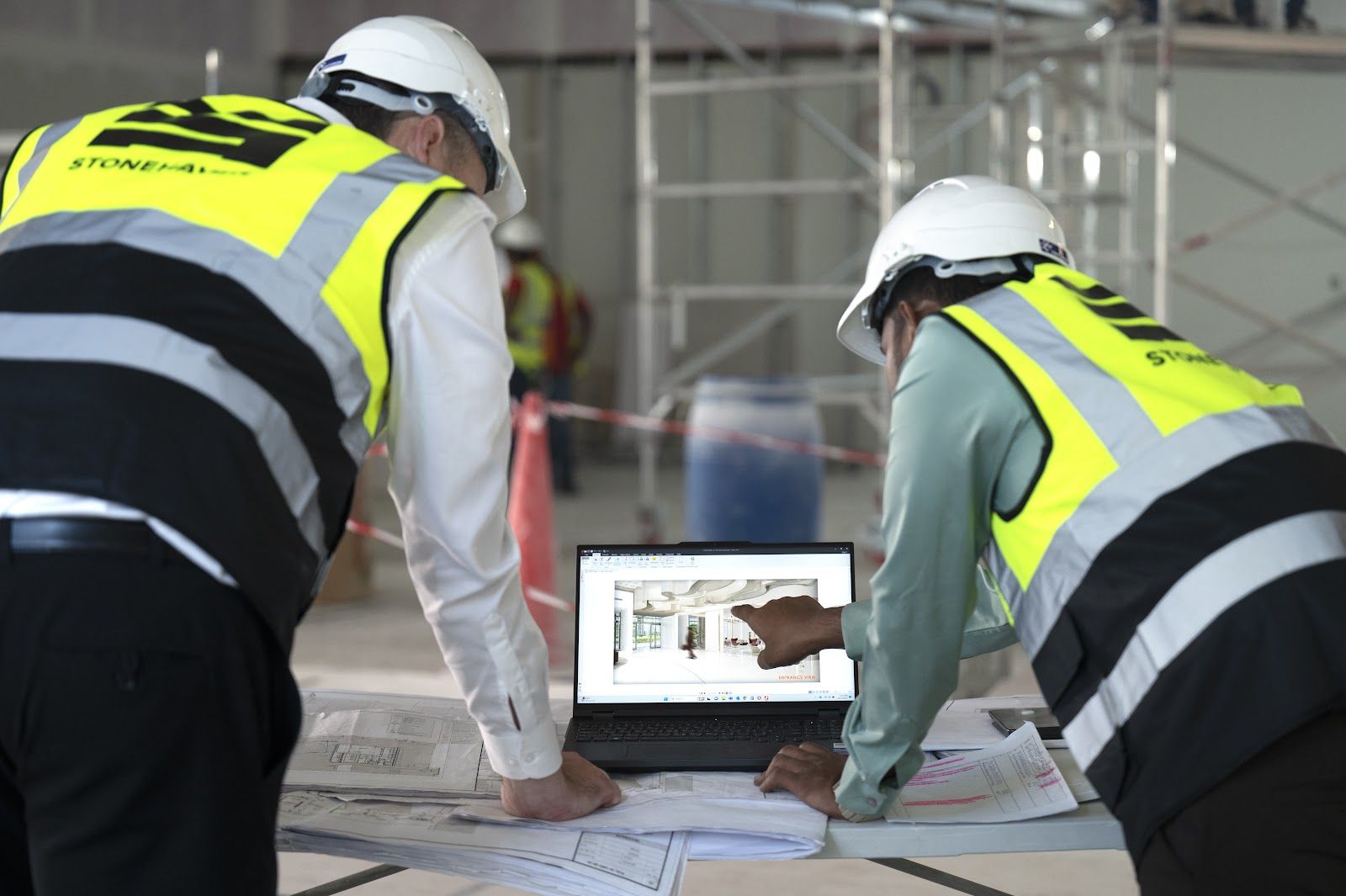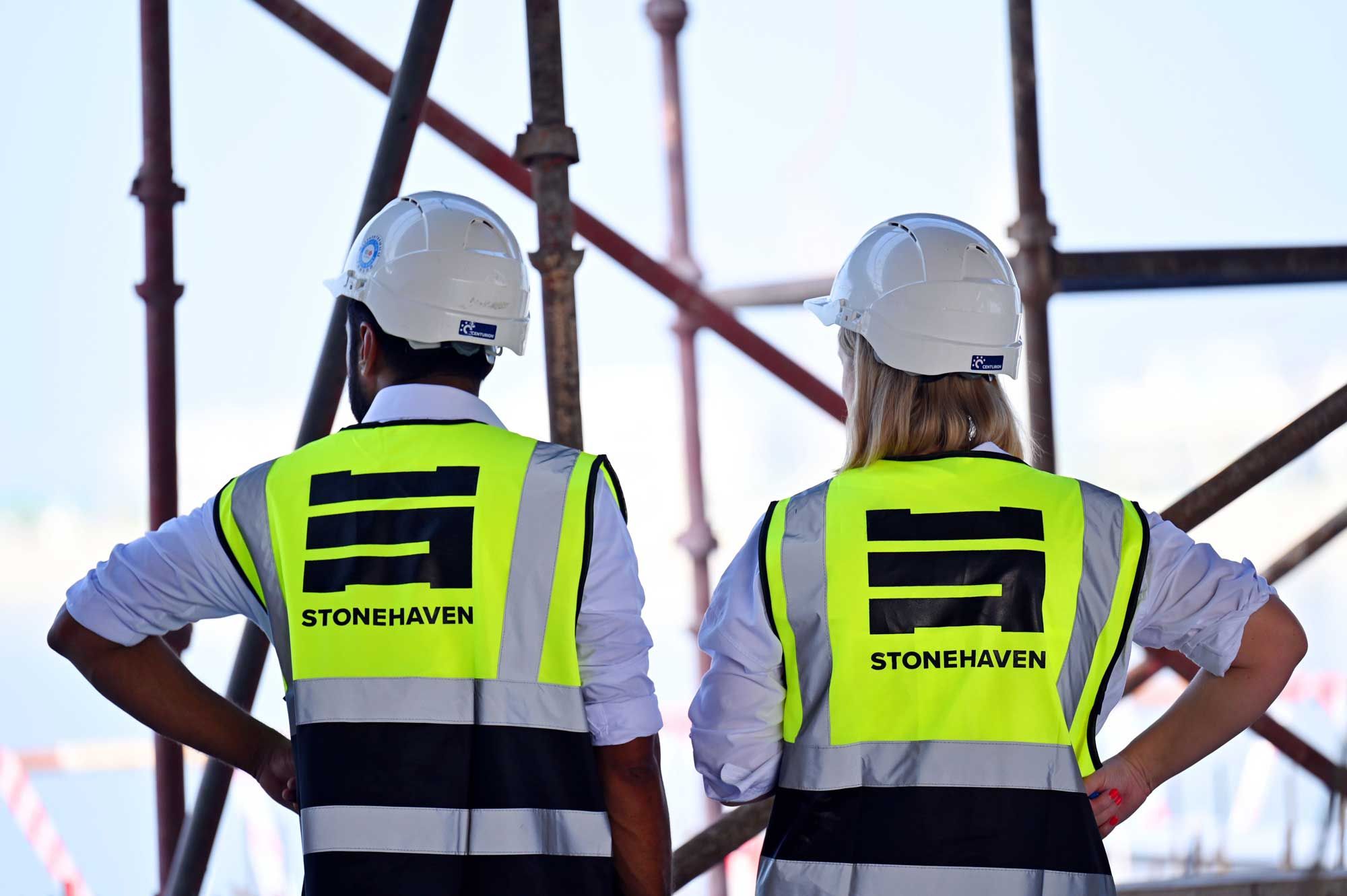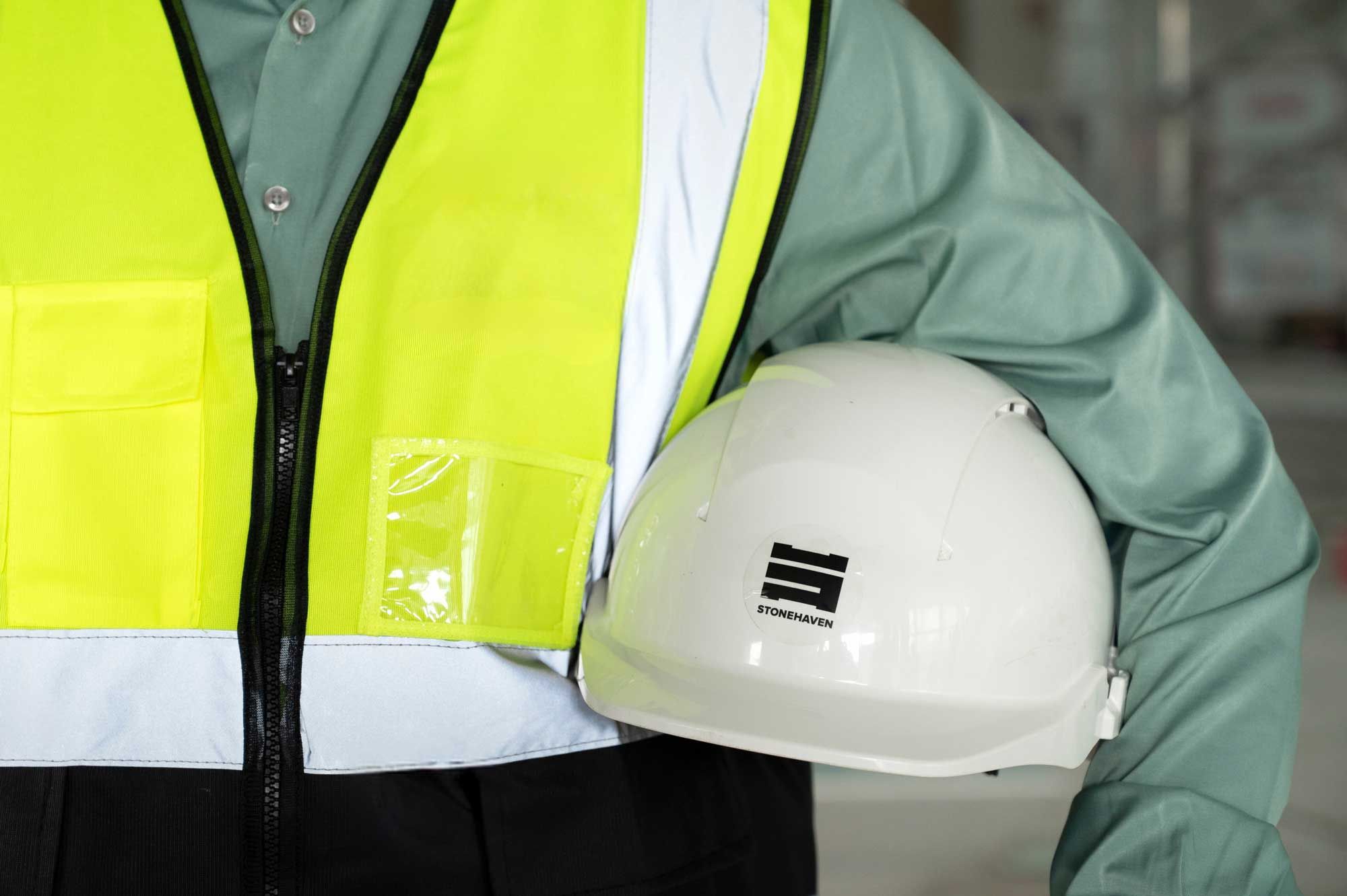In the construction industry, a project’s handover phase is a critical milestone. A well-prepared construction project handover checklist is essential for ensuring that the transition from construction to operational use is smooth and that every detail has been documented accurately. This checklist isn't just a formality—it's a cornerstone of project success, encompassing everything from compliance checks and technical documentation to client communication and operational handover.
This guide will walk you through the essentials of creating a construction project handover checklist, exploring its importance, structure, best practices, challenges, and modern solutions for efficient handovers. Drawing from Stonehaven’s industry expertise, we’ll show you how to elevate your handover documentation to ensure a flawless project closeout every time.
What is Project Handover Documentation?
The construction project lifecycle is intricate, encompassing various stages from design, planning, and execution, through to completion and operational handover. At the final stage, the project handover process becomes crucial, marking the formal transition of the completed project to the client or end-user. This isn’t merely a symbolic gesture—it’s the beginning of the project’s operational life. Here, a well-structured project handover checklist is an indispensable tool.
A project handover checklist serves several purposes. First, it provides a structured framework that ensures all critical documents, warranties, operating instructions, and compliance certifications are in order. This not only facilitates a smooth transfer but also instils confidence in the client, reassuring them that the project was managed professionally from start to finish. A carefully curated checklist goes beyond a simple “sign-off” and instead functions as a quality assurance tool, providing a comprehensive overview of the work completed, the standards met, and the requirements fulfilled.
In sum, a structured handover document is not only a professional obligation but also a bridge to a successful operational phase, fostering transparency, compliance, and client satisfaction. In 2023, 54% of construction firms prioritised ESG considerations during handovers, including ensuring environmentally compliant materials and reducing waste.
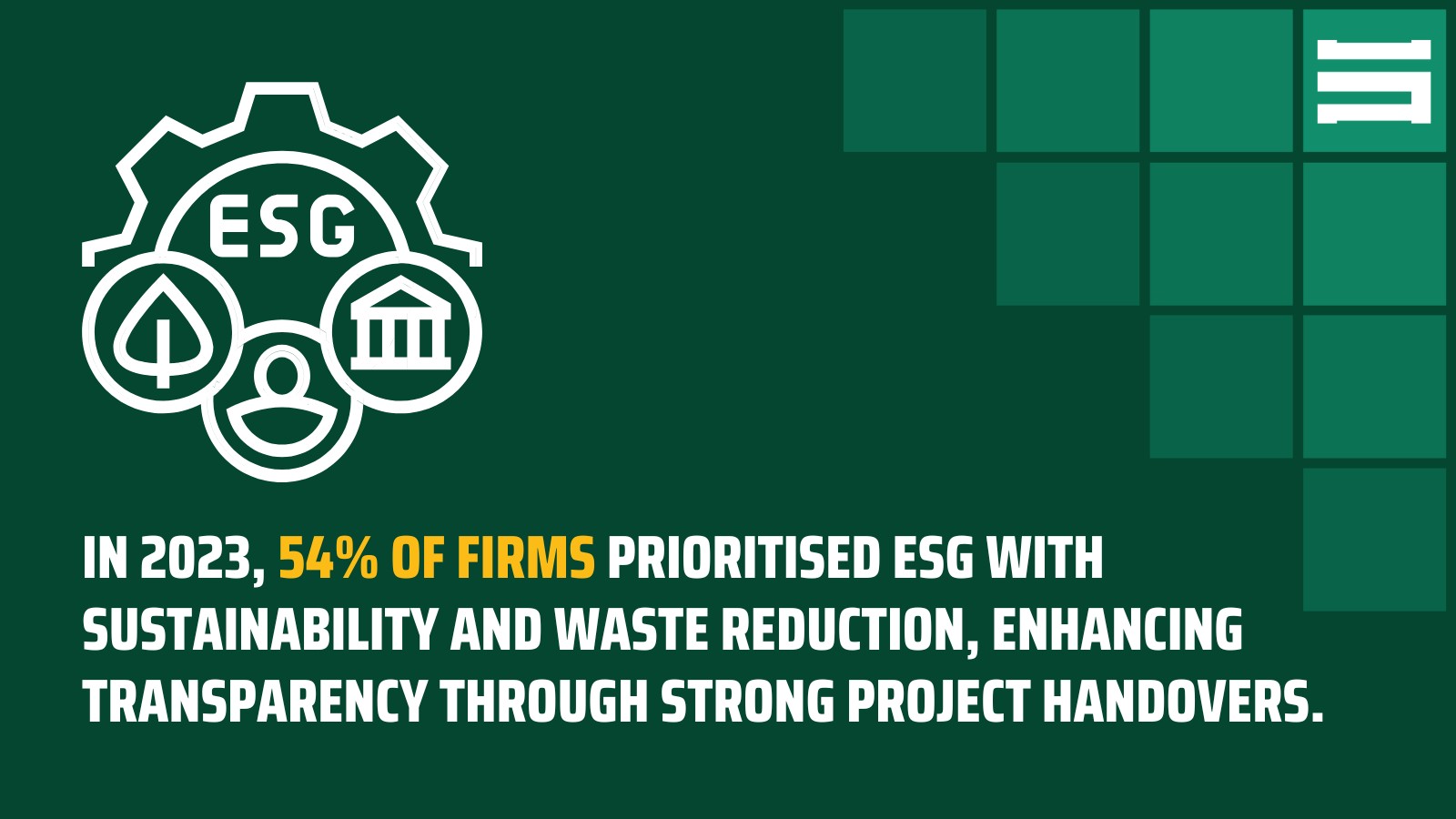
Understanding Project Handover Documentation in Construction
Project handover documentation in construction encompasses all the crucial records and information required to transition a project from the builder to the client or operator. This process is meticulous and detailed, involving a compilation of warranties, technical manuals, as-built drawings, and compliance certifications. The aim of a robust project handover is to equip the end-user with all the knowledge, technical details, and resources needed to operate, maintain, and manage the project effectively.
In summary, project handover documentation in construction is about far more than simply “handing over the keys.” It’s a systematic and essential process that bridges the construction and operational phases, ensuring a smooth transition and setting the foundation for project longevity and sustainability. With a well-prepared handover checklist, construction firms can ensure that their projects are delivered with the utmost professionalism and care, providing a solid platform for future maintenance and operational success.
Key Benefits of Having a Project Handover Checklist
A well-organised project handover checklist offers multiple benefits, serving not only as a tool for smooth project transitions but also as a quality assurance measure that reinforces professionalism and client satisfaction. Let’s delve into the key benefits of using a construction project handover checklist and why it is essential for both construction teams and their clients.
- Operational Continuity: One of the primary benefits of a handover checklist is the seamless operational transition it enables. By providing clients with complete, well-organised documentation, including maintenance schedules, operational guidelines, and technical details, the checklist ensures that the facility or structure is ready for immediate use. This continuity is vital, especially for clients who need to integrate the project into their existing operations without interruption. Whether it’s a commercial building, a residential complex, or an industrial facility, a well-executed handover empowers clients to operate effectively from day one.
- Compliance Regulation: Construction projects are subject to numerous safety, quality, and environmental standards. A thorough project handover checklist ensures that all these regulatory and compliance measures are documented and reviewed, significantly reducing potential liability risks. By having all compliance records, quality assurance documents, and relevant certifications in place, the construction firm demonstrates that every aspect of the project meets industry standards. This documentation can serve as a safeguard against future disputes or legal challenges, proving that all obligations were fulfilled at the time of handover.
- Client Satisfaction: Client satisfaction is fundamental to any successful handover process. A comprehensive, well-organised checklist demonstrates a construction firm's commitment to professionalism and transparency. For clients, receiving a thorough handover that includes all necessary documentation, instructions, and contact points creates a sense of trust and assurance. This is especially important in fostering long-term client relationships, as a positive handover experience can lead to future projects, referrals, and recommendations.
- Structured Closeout: A detailed project handover checklist serves as a structured approach to project closeout, allowing construction teams to systematically tie up loose ends and hand over projects efficiently. By following a pre-established checklist, construction teams can ensure that all project phases are documented, all compliance standards are met, and no detail is overlooked. This consistency across projects reduces last-minute complications and makes it easier for teams to transition to new projects seamlessly.
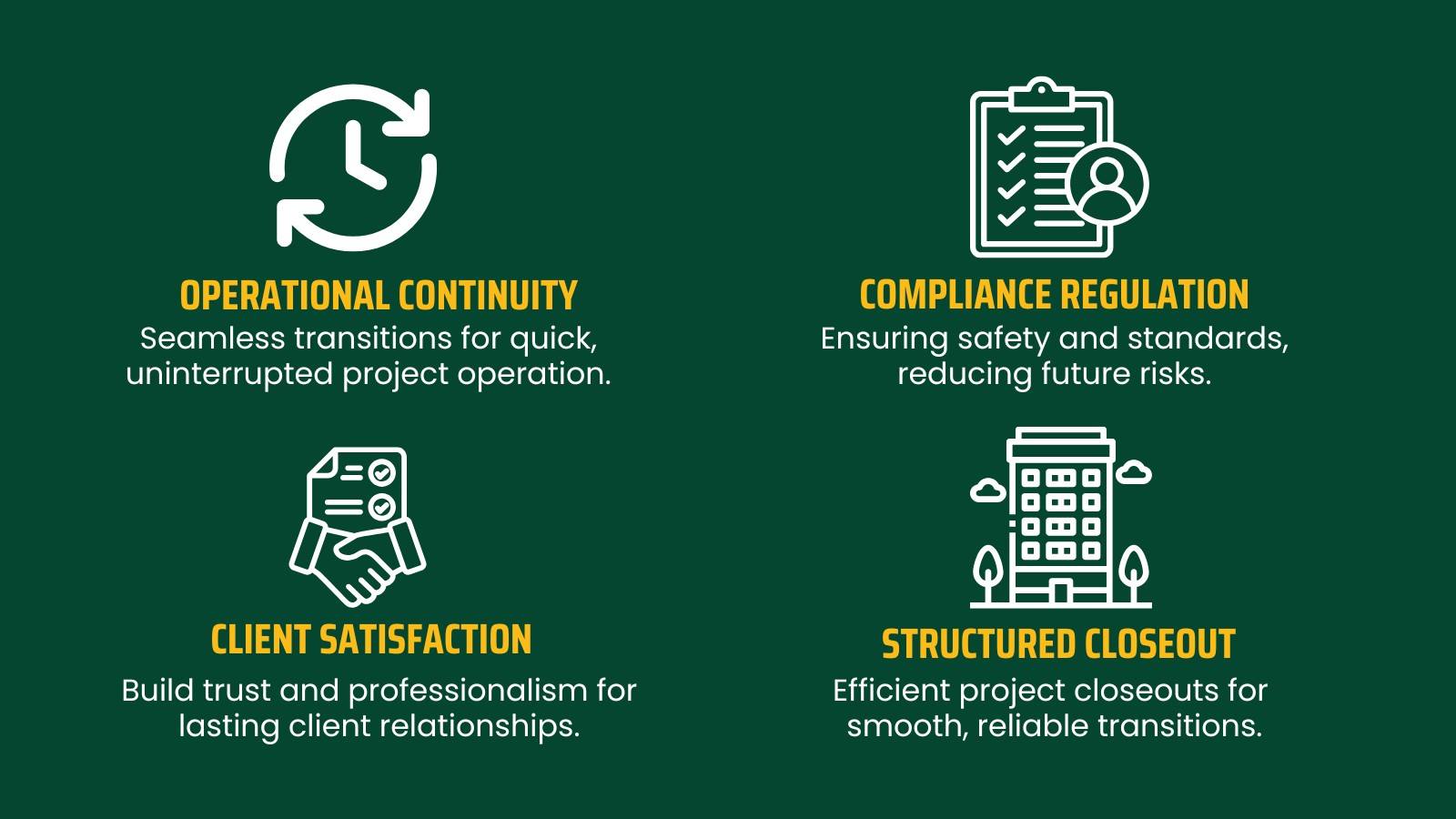
Steps to Create an Effective Construction Project Handover Checklist
Creating a comprehensive construction project handover requires a structured, strategic approach that accounts for all stages of the project and involves multiple stakeholders. Here, we’ll cover the essential steps that construction teams should follow to develop a checklist that meets industry standards and supports a smooth transition.
- Planning the Handover Process Early
The handover process should not be an afterthought but a key component of the project management plan. Incorporating handover planning from the outset allows teams to identify what documents and data points need to be captured throughout the project lifecycle. By establishing handover documentation procedures early, construction teams can ensure that they gather the right information at the right stages, avoiding last-minute document gathering and rushed reviews.
- Standardising Documentation with Templates
Consistency is key to an effective handover, and using standardised documentation templates ensures that all projects follow the same format. Templates such as a project handover document template or a construction site handover to contractor template can be customised for each project, streamlining the process and minimising the chances of missing important information. With a standard format, teams can quickly identify necessary documents and populate them systematically. Digital templates stored on a central platform make it easier to update, retrieve, and share information, adding an additional layer of organisation. - Organising and Structuring Key Information
The handover checklist should be divided into sections covering legal, operational, technical, and quality documentation. Breaking down the checklist into these categories makes it easier for clients to locate and understand different aspects of the project, especially if they need to reference information for operations or maintenance. Legal documentation might include contracts, insurance certificates, and compliance records. Technical sections could contain as-built drawings, system manuals, and operational guides, while quality documentation covers quality assurance and safety reports. This structured approach enhances clarity and user-friendliness, ensuring the end-user can efficiently access relevant information. - Incorporating Regular Reviews and Client Feedback
Conducting periodic reviews with stakeholders and the client throughout the project allows the handover process to be more collaborative and aligned with client expectations. These check-ins ensure that key details are consistently reviewed and that all documentation is up to date. Gathering client feedback early on can also reveal specific documentation needs or expectations, which can then be incorporated into the handover. Final review sessions with the client before formal handover ensure that the client understands the information provided and feels confident in managing the project post-handover. - Using Digital and Cloud-Based Tools for Accessibility
Today’s construction industry increasingly relies on digital tools for documentation management. Cloud-based solutions, such as project management handover templates, offer real-time access and version control, so teams and clients can always access the latest information. These tools support collaboration, enabling multiple teams to work on the checklist and contribute to different sections as needed. Digital documentation also allows for quick updates, facilitating an easier closeout and reducing the time required for finalising the handover. - Ensuring Compliance with Legal and Regulatory Standards
Compliance is crucial for any construction project, and it’s essential to ensure that all standards are met at the time of handover. This means thoroughly documenting safety, environmental, and legal compliance records and including them in the checklist. Using a handover inspection template can support a rigorous review process, verifying that every aspect of the project meets both local and industry-specific requirements. Compliance documents also protect both the construction firm and the client by establishing that the project adhered to all necessary regulations.
The Most Common Challenges in Project Handover Documentation
Despite the importance of handover documentation, several challenges can hinder its effectiveness. Recognising and addressing these challenges proactively can improve the quality of the handover process, enhancing both client satisfaction and operational efficiency.
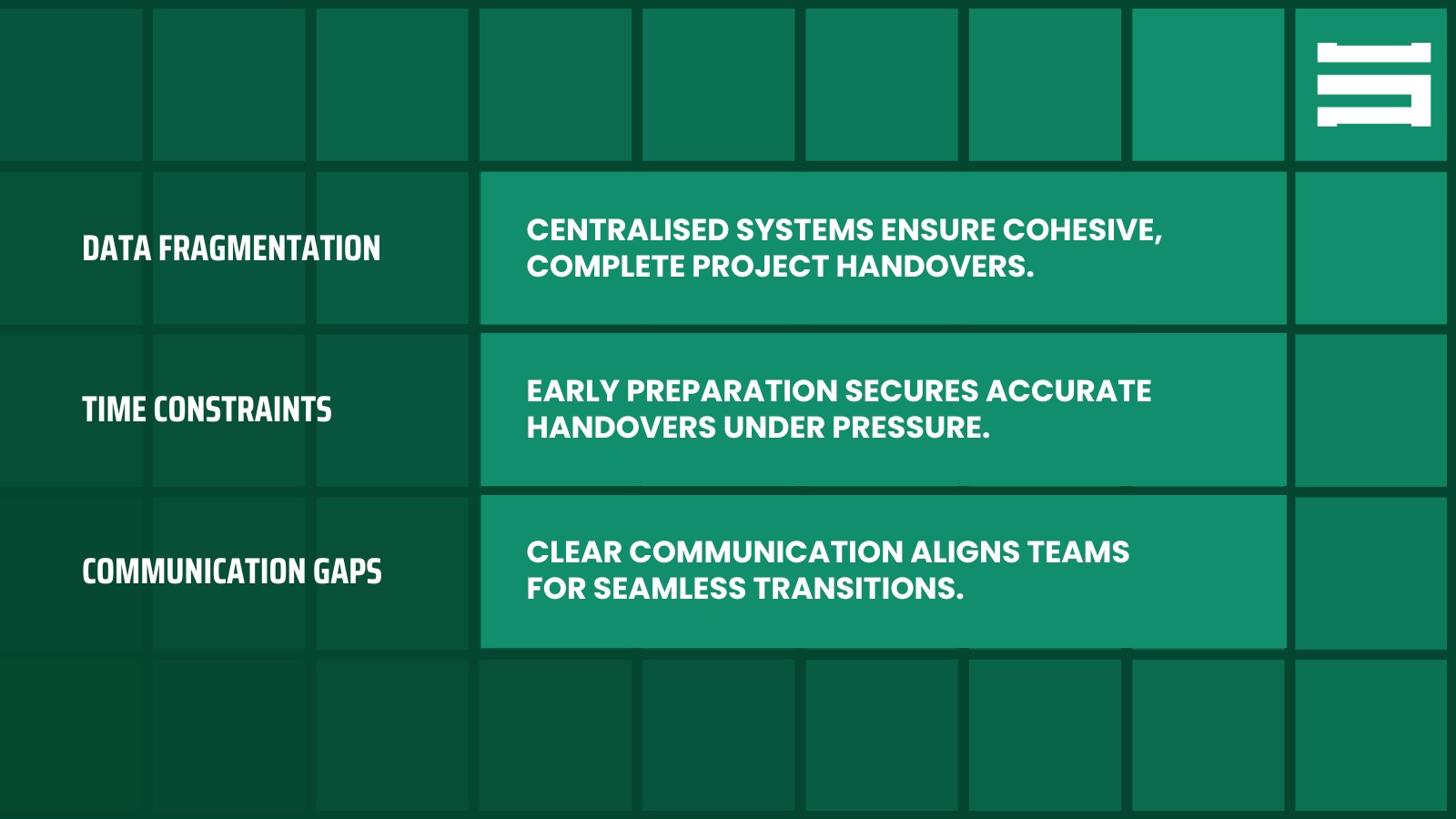
- Data Fragmentation - Construction projects typically involve numerous data sources, from project management software and BIM (Building Information Modelling) systems to field notes and compliance records. This fragmentation can make it difficult to compile a cohesive handover document. To address this, construction firms can implement centralised documentation systems that consolidate data, making it easier to retrieve and incorporate into the final handover package. Using digital platforms that integrate with existing construction software can streamline data collection, ensuring that essential information isn’t missed.
- Time Constraints - As construction projects approach completion, deadlines can tighten, leading to a rushed handover process. Last-minute handovers often result in incomplete documentation, missing information, and a less thorough client transition. To mitigate time constraints, teams should start compiling handover documents early and maintain regular updates. Establishing a structured timeline for the handover process allows teams to allocate time for final reviews and adjustments, ensuring that the handover is complete and accurate even under tight schedules.
- Communication Gaps - Effective handover requires close collaboration between multiple teams, including project managers, site supervisors, and operational staff. Communication breakdowns can result in inconsistent documentation or misaligned expectations between the construction team and the client. Establishing regular handover-focused meetings or using shared documentation platforms can help maintain alignment and ensure that all stakeholders are updated on the handover’s progress and requirements. Clear roles and responsibilities within the handover process can also support better communication, reducing confusion and redundancy.
Present Trends in Construction Project Handover Documentation
The construction industry is continuously evolving, and so is the project handover process. Technological advancements and new industry practices are transforming how handover documentation is created, managed, and delivered. Here are some of the most prominent trends that are shaping the future of construction project handover.
- Digital Documentation Platforms for Enhanced Accessibility
In the past, project handover documentation was largely paper based, which made it cumbersome, time-consuming, and prone to misplacement. Today, digital documentation platforms have become standard in the industry, providing cloud-based solutions that allow teams to store, organise, and access documents from any location. These platforms offer centralised access to project information, improving transparency, reducing retrieval times, and ensuring that the client has easy access to all necessary information post-handover.
Some platforms even allow for role-based permissions, so team members only see the documents relevant to their roles, streamlining collaboration further. In KPMG’s Global Construction Survey in 2023, it was noted that 81% of construction firms now use mobile platforms for digital documentation during handovers, improving efficiency and accuracy by centralising data and reducing errors.
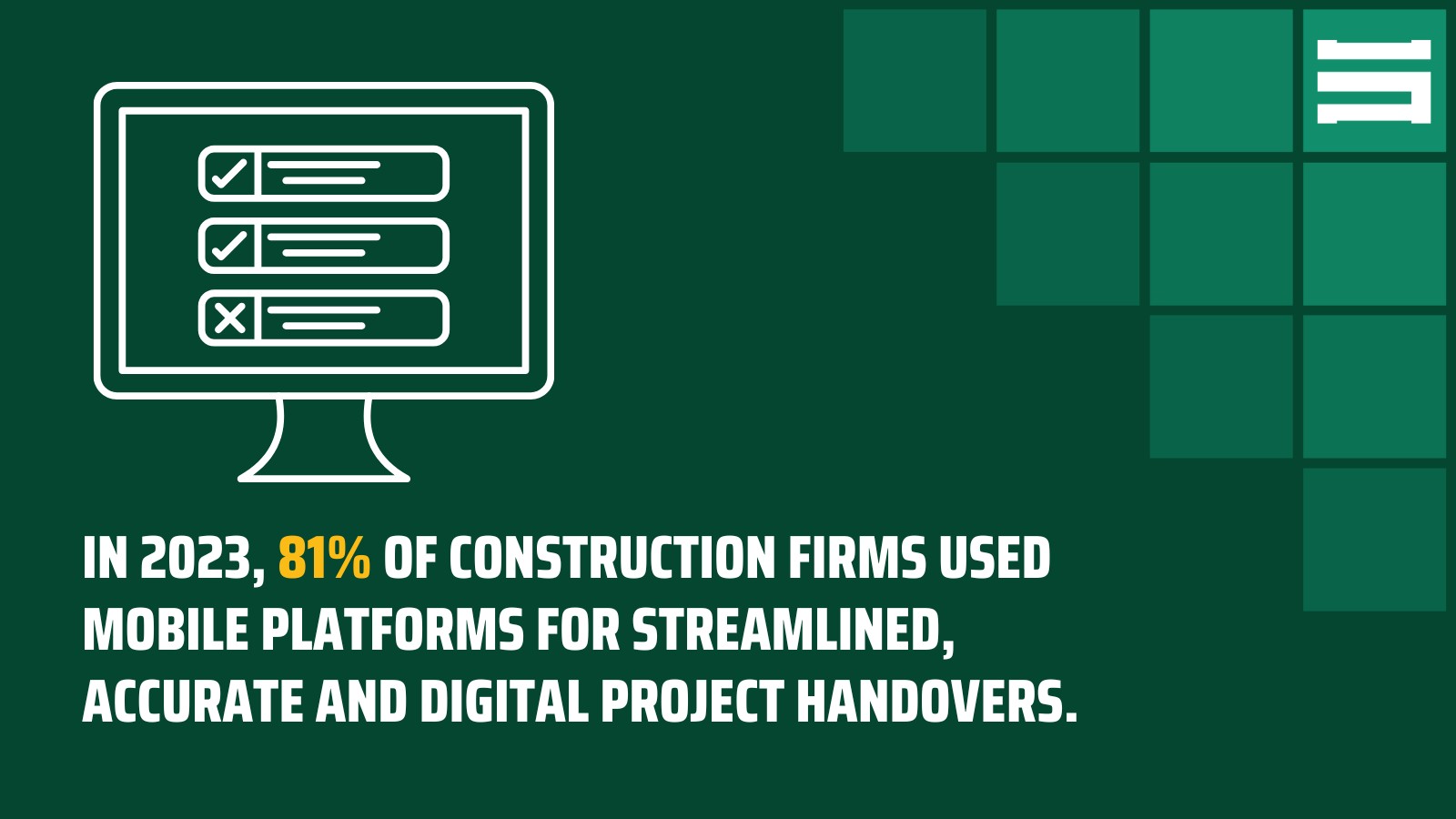
- Automation and AI Integration for Improved Accuracy
Automation and artificial intelligence are revolutionising many aspects of construction, including documentation. Automated tools can now be used to generate checklists, track document completion, and flag missing information in real-time, reducing human error. AI-driven systems can even analyse data from project management to identify potential compliance issues, incomplete sections, or deviations from the project plan. These tools help ensure that documentation is accurate and comprehensive, freeing up valuable time for team members to focus on finalising project details. - Real-Time Data Integration for Up-to-Date Information
In many projects, the handover document is a static snapshot taken at a particular time. However, real-time data integration allows teams to provide clients with up-to-date information on project components and systems. Real-time data integration ensures that clients have the most current information, which is particularly important for complex or long-term projects where small changes can significantly impact operations. With data integration, all aspects of the handover document remain accurate, reducing the risk of discrepancies between construction records and operational conditions. - Emphasis on Environmental Compliance and Sustainability
Responsible building has become a key focus in the construction industry, with projects increasingly held to higher environmental standards. As part of this trend, handover documentation now often includes environmental compliance records, carbon footprint data, and guidelines for energy-efficient operation. Sustainable practices are not only a regulatory requirement but also a selling point for clients focused on corporate social responsibility. By incorporating sustainability metrics into the handover, construction firms demonstrate their commitment to environmentally responsible practices.
Conclusion
A well-crafted project handover checklist is a game-changer for any construction project, facilitating a seamless transition from construction to operation. This checklist, when well-structured and digitised, ensures compliance, improves client satisfaction, and sets a solid foundation for long-term project success.
About us
Stonehaven is a trusted project management company and construction consultant based in Dubai, offering comprehensive construction management services across the UAE with offices located in Dubai, UK and Sri Lanka. As one of the leading project management companies in Dubai, we manage projects from inception to completion, ensuring quality, efficiency, and cost-effectiveness at every stage.
We deliver value through expert project management consultancy services, tailored to meet the unique needs of each client. Our core services include Cost Management, Project Management, Construction Supervision, Engineering Support, Design Support, and Marketing & Communications. Whether you’re looking for construction consultants or project managers in the UAE and wider GCC region, Stonehaven is your trusted partner for achieving excellence in your next project.
Stonehaven provides expert handover documentation services, ensuring efficiency and standardisation based on BSRIA, CIBSE, NEBB, and ASHRAE guidelines. With our focus on compliance, operational readiness, and client satisfaction, we ensure every project is handed over with complete transparency and all required documentation. From structured handover document templates to comprehensive checklists, Stonehaven provides the tools needed for a successful project closeout.
Take the next step toward hassle-free project transitions with Stonehaven. Contact us today to learn how our services can transform your handover documentation process.











